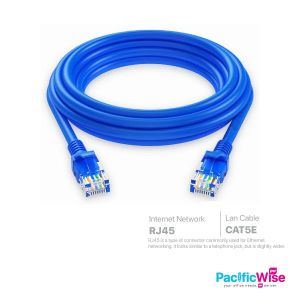Are You Facing A Slow Internet Connection?
Posted:
September 15, 2020

Top 10 Tips to Deal with A Slow Internet Connection
Sometimes, slow internet is the universe’s way of telling you to go play outside. Other times, it’s the universe’s cruel joke to destroy your productivity.
Here are 10 ways to troubleshoot, fix, or just survive a slow internet connection.

10. Check Your Speeds (and Your Plan)
Sometimes, your internet is slow because you’re only paying for slow internet. Log onto your provider’s web site (or give them a call) and find out what plan you have. Then, head on over to Speedtest.net and run a speed test. If the numbers match up to what you’re paying for, then your network is working fine and you’re just paying for slow internet—and the best way to speed it up will be to upgrade. (Though some of the below tricks will help you eke out a bit more speed). If the numbers don’t match, read on for a few ways to fix that problem.

9. Troubleshoot Your Hardware
Before you go cursing your internet provider, give your modem and router a quick reset (that is, turn them off and on again) and see if that helps. Check the other computers in your house to see if their internet is slow, too—if the problem only happens on one computer, the problem is that computer, not your router or modem. Run through these troubleshooting steps to see if it’s a hardware problem. Then, once you fix your router or modem (or replace it), you’ll be browsing speedily once again. Check out our complete guide to knowing your network for more router tips, too.

8. Fix Your Wi-Fi Signal
If you’re using WiFi, you might find that your router and internet are fine, but your wireless signal is weak, causing a slowdown. In that case, you may need to reposition, tweak, and boost your router with a few tricks. There are more than we could share in one paltry paragraph—in fact, we have a whole top 10 list just for fixing WiFi, so check that out if you suspect wireless signal is the problem.

7. Turn Off Bandwidth-Hogging Plugins and Apps
If your hardware seems to be in working order, see if any other programs are hogging the connection. For example, if you’re downloading files with BitTorrent, regular web browsing is going to be slower. You should also try installing extensions like AdBlock Plus or FlashBlock, which will block some of the bandwidth-hogging ads, animations, and videos that can use up your connection. File-syncing services like Google Drive, Dropbox, or OneDrive might be moving data in the background, which can eat up your bandwidth and slow down your internet connection. Quit or pause those applications if you find them moving files. Computers often download necessary updates in the background, while you’re doing something less web-intensive. You can configure your PC to notify you before downloading any updates, and schedule installation when you’re not using your computer, either in the middle of the night or when you’re off at work. These fixes probably won’t solve all your issues, but they can at least help make a slow connection feel more usable.

6. Try a New DNS Server
When you type an address into your browser—like www.pacificwise.com.my—your computers uses something called DNS to look up and translate that into a computer-friendly IP address. Sometimes, though, the servers your computer uses to look up that information can have issues, or go down entirely. Check out our guide to finding the fastest (and most secure) DNS servers for more information. If your default DNS servers aren’t having problems, then you probably won’t find too much of an improvement with an alternative server—but it might speed up your browsing by a few milliseconds, at least.

5. Optimize Your Web for a Slow Connection
Troubleshooting slow internet can take awhile, and in the meantime you still need to browse. Or maybe you’re at a coffee shop or on a plane, and there’s nothing you can do about your slow speeds. In that case, it’s time to optimize your web for a slower connection: use mobile or HTML versions of your favorite sites, disable images, and use features like Opera Turbo. In fact, we recommend setting up a secondary browser on your laptop for just such a situation—it can really make a difference when you need to work on a slow connection. Google has its own Data Saver extension, which employs the company’s servers to compress browsing data before it reaches you. If you’re in a pinch and really need to get online, you can always tether to your smartphone, turning it into an access point for your laptop or other wireless device. While there’s usually no data limit when you’re browsing in your home or at a coffee shop, tethering via your smartphone could eat up your data cap. You should employ the same data-saving tips when using your phone’s tethering service. Optimizing your web browser with mobile or HTML versions of web pages is useful when data is not only hard to come by, but potentially pricey.

4. Work Smart
If you need to get work done on your slow connection, you may have to prioritize tasks differently than if your internet were super fast. So, separate your tasks into bandwidth-heavy and bandwidth-light ones. Get the light ones done when you’re on your slow connection, and group all the bandwidth-heavy tasks together so you can do them if and when you get faster access (and if you can’t get it at home, see if you can borrow a neighbor or relative just for those tasks). Similarly, work outside your browser whenever possible—if you’re doing basic writing, do it in your favorite text editor instead of in your browser. If you plan your work ahead of time, you can at least make the best of a bad situation.

3. Call Your Internet Provider
If you’ve gone through all the necessary troubleshooting steps and your internet is still slow, then it’s time to call your internet provider and see if the problem is on their end. Remember: don’t just assume they’ve done something wrong, and treat your customer service representative with respect. You’re much more likely to get good results. Don’t forget, they can probably hear you bad-mouthing them while you’re on hold. Check out our guide to getting better customer service for tips on cutting the line and getting your way. You might want to see if you can get a better deal on your internet, while you’re at it—especially if they’ve been giving you the wrong speeds all this time.

2. Find a New Provider
If your ISP can’t help you (maybe they don’t provide the speeds you want, or maybe you’re just sick of their horrible customer service), it’s time to find a new ISP. You might have trouble in this endeavor, however, due to the stranglehold ISPs have on the market, stifling competition and giving consumers few options from which to choose. That may mean a switch to a different type of provider might be in order, like cable, DSL, satellite, or fiber. You should do a little research before you pick up the phone. Check out our guide to choosing the best provider in your area, and make sure they provide the type of speeds you want.

1. Use Your Time Productively
If you’re lucky, you can get your internet speeds back up to snuff quickly and stress-free. But, if not, you can at least try to put a good spin on it: As long as your work isn’t too bandwidth-intensive, slow internet could actually make you more productive. After all, if Facebook takes a minute to load, you’re a lot less likely to pop over for a “quick break” (that turns into an hour-long photo-fest) when you’re supposed to be working on that term paper.
Source: https://www.gizmodo.com.au/2020/07/top-10-ways-to-deal-with-a-slow-internet-connection/
0 Comment(s)












